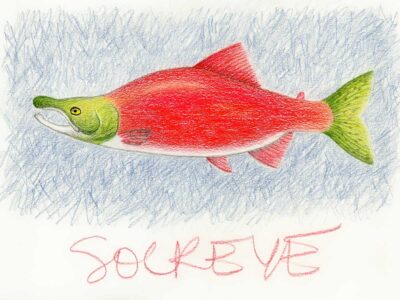Wild salmon used to run in rivers all over northern Europe. They swam up American rivers throughout New England and the Pacific Northwest. Atlantic, coho, king, steelhead, sockeye, pink, chum — they migrated in numbers we can’t even fathom today.
But then the Industrial Revolution happened and people chose development over salmon. They cleared forests, trampled riverbanks, drained wetlands, irrigated land, overfished, built dams, and dumped chemicals, sewage, and sawdust into the rivers. All the while, the wild salmon returns grew smaller and smaller.
In his book, Salmon, Mark Kurlansky discusses the global history of salmon and how saving them is the same as saving ourselves. He discusses the beginnings of North American settlement and makes an interesting point I hadn’t considered before:
When the Europeans came to North America, they had already decimated their own salmon rivers. They then did the exact same thing to the rivers along the East Coast. And when those rivers died, they moved on to the West Coast and followed the same pattern.
Why didn’t they ever figure out how to maintain the rivers?
The answer: They never meant to save the rivers, or the salmon, or any other fish. In their minds, they weren’t doing anything wrong.
To the European settlers, North America was for commerce. They saw the fish, trees, animals, and land as things to buy and sell. Most wanted to get rich off of timber, furs, gold, or salmon, and overlooked the fact that the rivers and fish were dying along the way.
They thought this was what progress looked like.
The salmon, quite reasonably, disagree.
Two hundred or so years later, we know their shortsightedness was a mistake. The wild salmon are showing us by disappearing. Today, they mainly return in significant numbers to Alaska and the Kamchatka Peninsula in Russia.
Dam removals in Maine and the Pacific Northwest have successfully restored wild salmon populations. Most recently, four dams were taken down along the Klamath River in Oregon and California and showed almost immediate results. Wild salmon returned and started migrating only 10 days after the dams came down.
Removing large concrete barriers is a slow process though. The Tribes along the Klamath River worked for decades to take those dams down.
Maybe this will give us enough time to refine our inherited ideas about progress.


 Be Here Now
Be Here Now